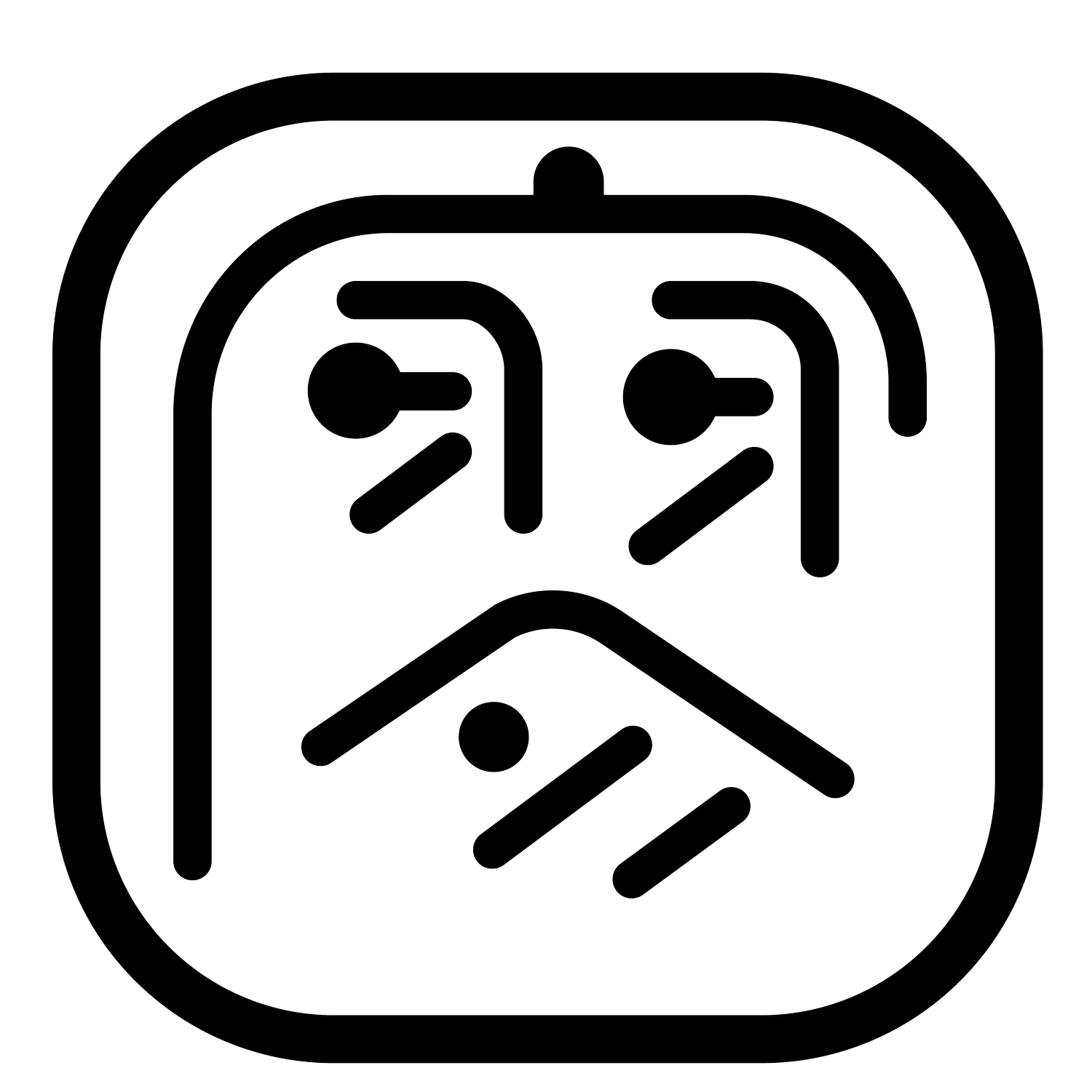Renault-Nissan-Mitsubishi Alliance | Autonomous Vehicles | Product Design | IOS DevelopmentRedesigning Onboard Experiences for Autonomous Vehicles
UX Engineer, Software Team Lead | May 2018 - May 2019
How might we redesign the onboard experiences for passengers of autonomous vehicles?
Techniques & ToolsSoftware: XCode, Swift, Madmapper, Projection Mapping
Design: Figma, Prototyping, User Testing, User Interviews
TeamMentors/Advisors: Dr. A. Agogino, Dr. E. Kim
Software: T. Liaw, M. Kumaran
Hardware: J. Tabuada, P. Cholsaipan
Design: K. Pham, S. Hyoung
Final ProductChallenge
As autonomous vehicles technology is rapidly improving, this opens up opportunities to design for passengers who will no longer need to operate the vehicle to drive. However, we need to consider the values that passengers truly need and be aware of dangerous situations that can arise from faulty designs in autonomous vehicles.
Our goals were to:
Explore user pain points with autonomous vehicles.
Redesign autonomous vehicle interiors to reflect user needs and wants.
Implement prototypes to present to stakeholders.
Design Process
We employed a human-centered design approach to this project in order to empathize with users of autonomous vehicles and design solutions to real problems. We had weekly team meetings with our clients and advisors to present our ongoing work and to receive feedback on the direction of the project. We conducted all of our prototyping and user testing in an Airstream donated to us by our client.
Airstream Prototyping Space
Design Research
Previous Work
The previous team at our center conducted literature review and user testing to determine opportunities to design for users in autonomous vehicles. After the completion of their prototype, we whiteboarded user pain points from their work.
Brainstorm Session: Pain Points
Based on the previous work, our design team created two user scenarios based on created personas: Stressed Sam & Curious Cameron.
Stressed Sam
Curious Cameron (Originally Curious Kevin)
Prototype Development
Based on the user scenarios, I worked together with the design and hardware teams in creating an interactive space to test our scenarios with actual users.
Stressed Sam
Given the Stressed Sam scenario, she typically drives her autonomous vehicle for work/school commute. In order to reduce her stress levels to promote wellness, we developed a interior design focused on the senses of:
Vision
Sound
Touch
Smell
As we considered seating arrangement to be a designable factor, we decided upon a traditional, forward-facing seating arrangement for the Stressed Sam scenario. For the user to control the interactive environment, we designed the user interface with a mobile application.
Stressed Sam Interior Space Mockup
Stressed Sam: Software Interface & Interaction Development
VisionWe envisioned a space in which we could project relaxing scenes onto the front car screen, including scenes of rain, waves, beach, etc. I worked with the hardware team on installing projectors in the Airstream for user testing, and mapping the projections to fit frontal area of the Airstream with Madmapper.
Initial projection setup
SoundWe set up a binaural 360 degree sound environment with speakers with sounds proven to have a relaxing effect, so we set up a speaker system in the Airstream to test relaxing sounds of rain, wind chimes, underwater sounds, city life, jazz and ASMR.
TouchThe previous team’s work included a prototype for providing unique haptic effects to users in autonomous vehicles. We reused the prototype by integrating the machinery into the car chairs in order to provide an immersive relaxing effect. We also attached a full-body massage cushion to combine with the haptic prototype.
SmellAlthough we researched aromatherapy for our interior spaces, we did not implement this into user testing.
User InterfaceThe design team created a high-fidelity mockup of the mobile interface in Figma. With the mockup, I developed the iOS application for users to choose pre-designed settings or create their own immersive environment for relaxation.
Figma Mockups
Curious Cameron
Curious Cameron is an autonomous vehicle driver who enjoys road trips and wants to interact with the car’s outside environment and the inside passengers.
We designed a seating arrangement with flexibility in several directions. The user will be able to rotate their seats outwards to enjoy the view, inwards to interact with passengers and/or partially flip the chair for an arm rest. The hardware team created a low-fidelity and high-fidelity prototypes of these chairs.
Inward Facing Mockup: Passenger Interacton
Outward Facing Mockup: Environment Interaction
We designed for a 360-degree clear window panel with augmented reality projections of local landmark information based on other travelers’ or locals’ inputs. I set up projectors in the Airstream to project for a 180 degree area for user testing. I worked with projection mapping with Madmapper to project the drive through Yosemite and the projections of the user-indicated landmarks onto the screen. I developed the projection mapping so that it would be interactive with the user interface that was designed for a tablet device.
User InterfaceThe design team created a mockup of a tablet user interface with Figma, which I implemented on an iPad. This interface would allow users to personalize their desired landmarks that would be projected onto the outside environment.
Figma Mockups
User Testing
For Stressed Sam, we wanted to test:
Visual, audio and haptics effects
Pre-designed vs. user-created environments
User interface
For Curious Cameron, we wanted to test:
Usability of landmark projections
Flexible seating arrangement
User interface
I worked with the design team on creating a user testing guide and post-interview questions for both user scenarios.
Preliminary User Testing
We presented our work to the ISAM (International Symposium of Academic Makerspaces) at Stanford University and used the opportunity to do preliminary user testing and created a low-fidelity prototype of both our user scenarios.
Low-Fidelity Prototype for Preliminary User Testing
Renault-Nissan Demo DayWe presented our work to Renault-Nissan and conducted user testing with autonomous vehicle experts.
Stressed Sam User Testing
Curious Cameron User Testing
Curious Cameron UI User Testing
Future Work
During user testing, we found interactions with the user interfaces with both Stressed Sam and Curious Cameron scenarios lowered the feelings of immersiveness, whether that be relaxation or exploration. We concluded that the tablet or mobile interface limited the immersiveness of the environments.
We then brainstormed other interaction designs including:
eye-tracking technologies
speech command
virtual reality/augmented reality
This led to a continuation of this project in which I worked with the design and hardware team exploring projection mapping as an interface for autonomous vehicle users. I presented this future work at the International Human-Computer Interaction Conference in July 2019.


























